How frogs breath underwater? (Amazing strategy)
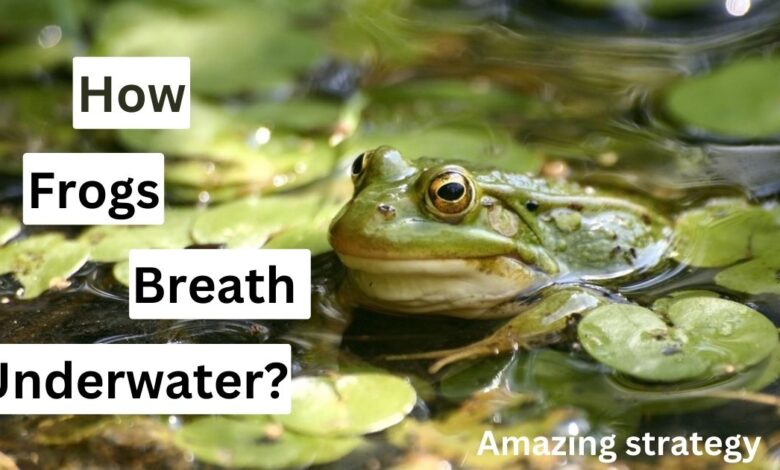
How frogs breath underwater? (Amazing strategy)
Frogs, being amphibious creatures, favor habitats that provide both terrestrial and aquatic environments. While they respire through their lungs on dry land, they extensively inhabit water-rich areas. Found across the globe, excluding Antarctica. Frogs employ a remarkable adaptation to breathe underwater without gills. This is achieved through cutaneous respiration, where their skin, kept moist at all times, absorbs oxygen even when submerged.
This ability allows frogs to spend extended periods in water, facilitated by suitable oxygen levels, even during hibernation. Notably, during their tadpole stage, frogs possess gills, keeping them predominantly submerged until they undergo metamorphosis.
How much time frogs stay underwater?
While frogs can respire underwater through their skin, there exists a limitation to the duration they can spend submerged. The skin’s capacity for gas exchange is finite, and the availability of oxygen in the environment plays a crucial role.
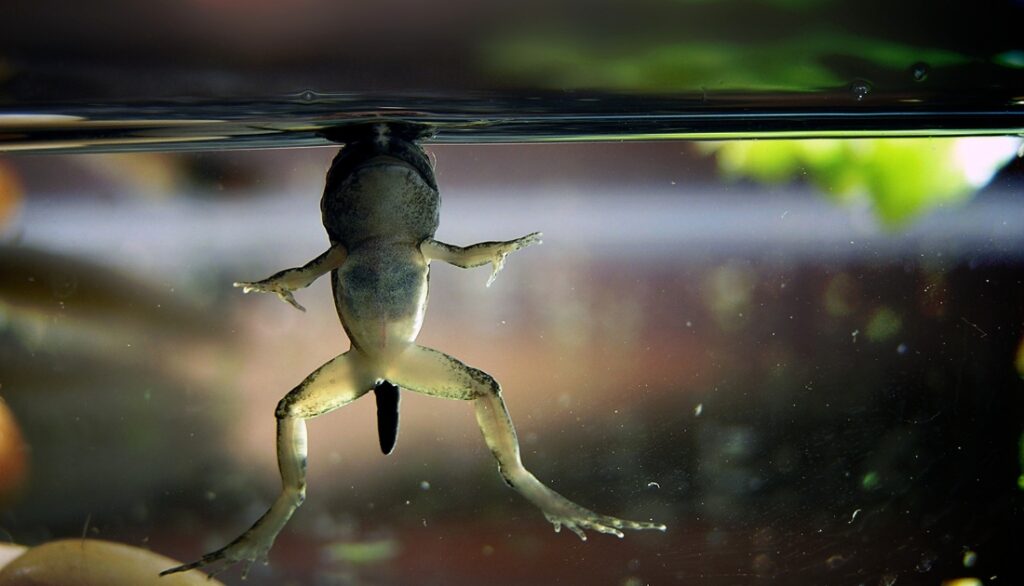
In many species, the skin predominantly facilitates the expulsion of carbon dioxide from the frog’s body, with lungs primarily responsible for oxygen intake. Before extended underwater sojourns, frogs must replenish their oxygen supply through lung inhalation. This underscores the intricate balance between cutaneous respiration and pulmonary breathing in the amphibian’s respiratory process.
Frogs demonstrate the remarkable ability to hold their breath while absorbing oxygen through their skin in water. The exact duration a frog can remain submerged remains uncertain, with common notions suggesting a range of four to seven hours. Yet, concrete data validating this timeframe is lacking.
The potential for frogs to stay underwater indefinitely exists, contingent upon the sufficiency of oxygen in the water. However, various factors influence a frog’s resurfacing behavior beyond oxygen levels. Surface visits are essential for activities like feeding, mating, and seeking protection from predators. The intricate interplay of these factors underscores the multifaceted nature of a frog’s aquatic lifestyle.
How frogs breath through their skin?
All frogs fall under the category of amphibians, signifying their ability to thrive on land while necessitating a moist environment. This dual requirement arises from the fact that frogs employ cutaneous respiration, also known as cutaneous gas exchange, in addition to lung respiration.
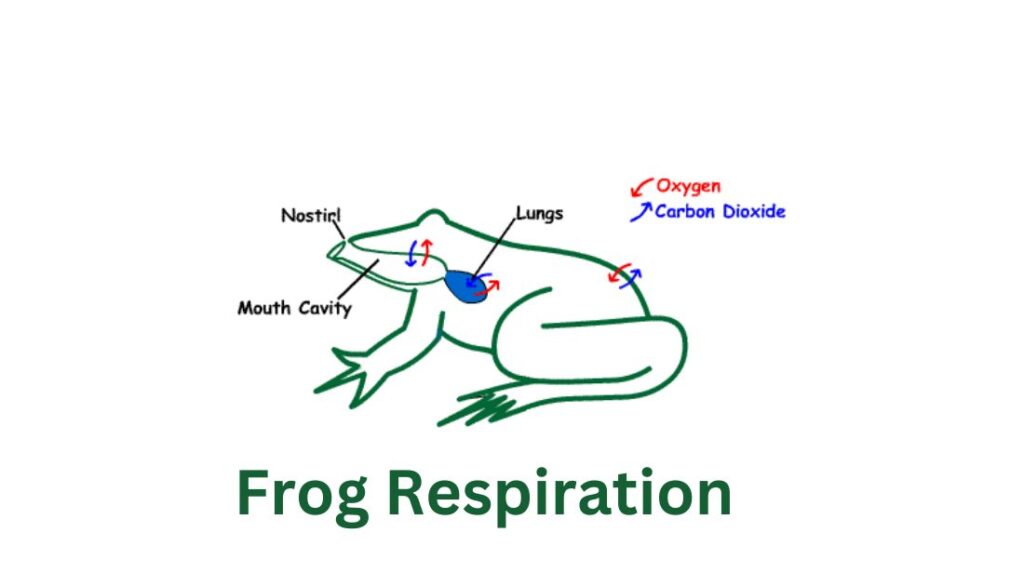
Cutaneous respiration in frogs hinges on a delicate epidermis, the outer layer of their skin, which proves to be highly sensitive. Overexposure to sunlight can harm their skin cells, while excessive wind contributes to skin dryness.
Choosing habitats in proximity to water allows frogs to strike the right moisture balance essential for the proper functioning of their physiological processes.
How frogs hibernate underwater?
Given their cold-blooded nature, frogs depend on external influences to regulate their body temperatures. Enduring cold winters could prove perilous for them without the ability to hibernate, a process involving the slowdown of their metabolism.
Hibernation becomes crucial as it helps frogs cope with the challenges posed by drastic temperature fluctuations, preserving their energy and reducing oxygen requirements. Unlike some aquatic animals such as turtles that bury themselves in mud for hibernation, frogs maintain a strategic approach.
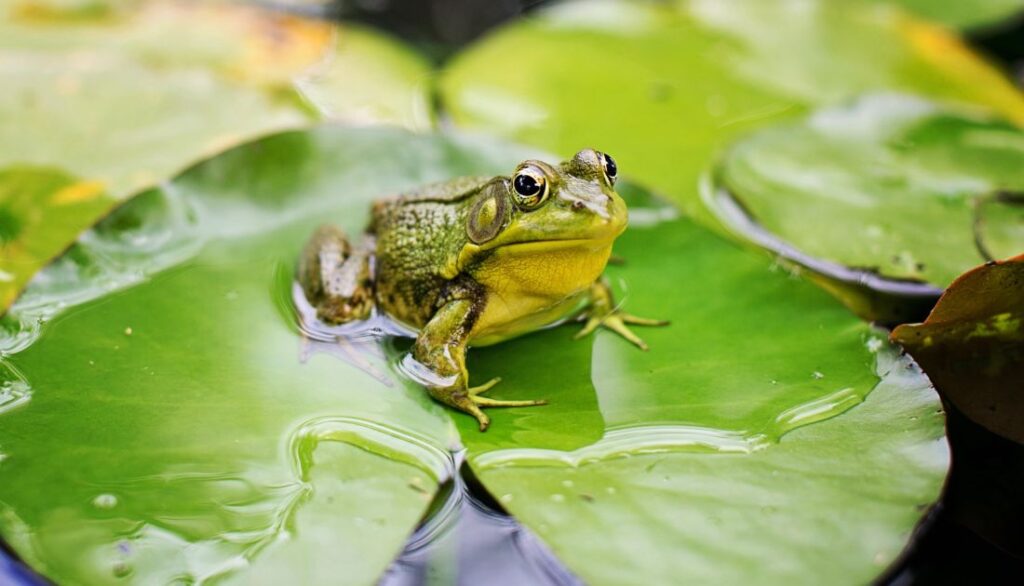
Sitting atop the mud allows them to access the oxygen necessary for underwater respiration, a vital function given their reliance on skin-breathing. Despite the slowed metabolism, some frogs may even engage in periodic swimming during hibernation to ensure consistent oxygen levels.
For frogs less adapted to aquatic environments, such as tree frogs, their hibernation strategy involves burrowing into leaves or seeking refuge in rock and tree crevices.
See Also: Do crocodiles experience any pain? (Fully explained)
While these hiding spots may not offer extensive protection against the cold, frogs employ a unique adaptation. They enhance their cold resistance by elevating glucose levels in their blood, a physiological mechanism that contributes to their ability to withstand challenging winter conditions.
Baby Frogs with Gills
While the concept of breathing underwater is often associated with having gills, adult frogs do not possess gills. However, their life cycle begins with eggs, with certain species, like bullfrogs, laying sizable clutches, sometimes reaching 20,000 eggs.
How frogs breath underwater? (Amazing strategy)
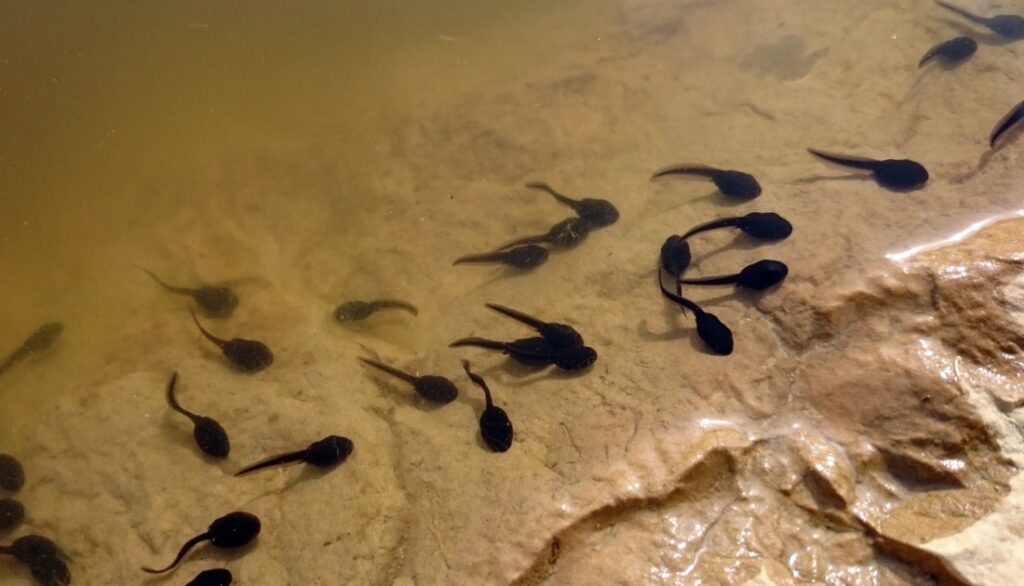
The eggs hatch into tadpoles or pollywogs, characterized by small, round heads and long tails; notably, they lack arms and legs at this stage. Tadpoles feature gills, and many species remain in the water throughout their tadpole phase.
As they progress into the froglet or young frog stage, these gills undergo regression, coinciding with the development of their lungs. This transitional phase allows them to spend increasing amounts of time out of the water until they reach full adulthood as frogs.
FAQs
Is all frogs aquatic?
No, not all frogs are strictly aquatic. While many frog species have aquatic tadpole stages, adult frogs can vary in their habitats. Some frogs are predominantly terrestrial, living on land and venturing into water only for breeding or other specific activities. Others are semi-aquatic, spending time both in water and on land.
Which frogs are not swimmers?
Tree frogs, for the most part, aren’t proficient swimmers. Instead, they possess distinctive, claw-like toe bones accompanied by specialized toe pads. Certain species even feature additional bones in their toes or exhibit unique bone structures.
What is waxy monkey frog?
The waxy monkey frog is known for secreting a waxy substance from its skin. Utilizing their legs, these frogs spread the wax across their bodies, serving as a protective measure to prevent their skin from dehydration.
How frogs can drown?
In circumstances where a frog’s lungs are submerged in water without adequate oxygen, the risk of drowning becomes a genuine concern.



